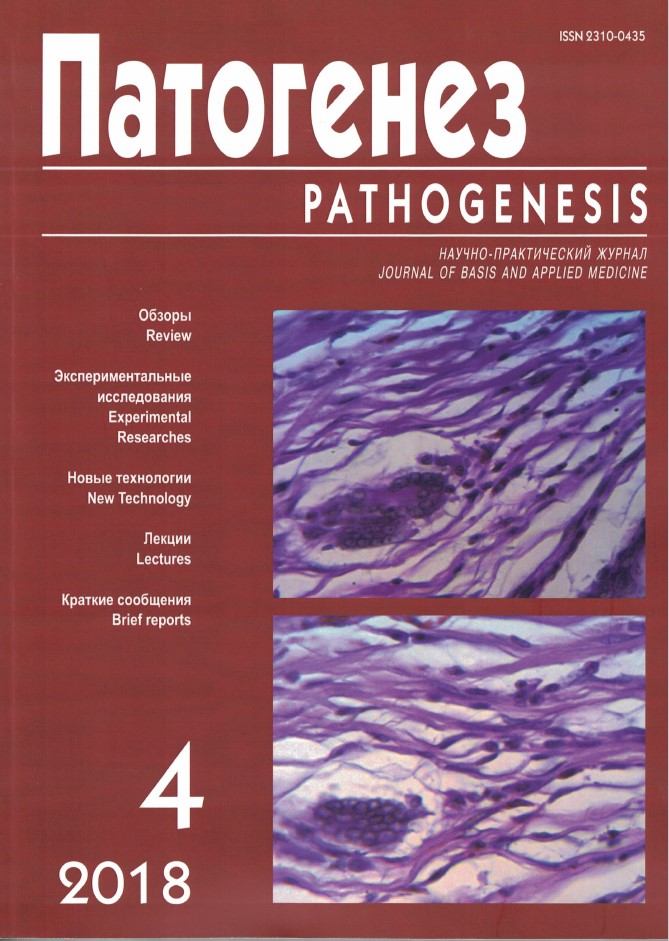Effect of poly (ADP-ribose) polymerase-1 inhibition on concentrations of intracellular calcium and ATP and survival of cultured rat cerebellar neurons in overstimulation of glutamate receptors
Abstract
Background. Studying mechanisms of the nuclear enzyme, poly (ADP-ribose) polymerase-1 (PARP-1), inhibition on changes in intracellular Ca2+ ([Ca2+]i and ATP [ATP] concentrations in neurons provides understanding of biochemical processes in stroke and helps selection of drugs
for the treatment of consequences of glutamate hyperexcitability. Aim. To determine changes in [Ca2+]i, [ATP], and cell survival under a simultaneous action of toxic concentrations of glutamate (Glu) and PARP-1 inhibitors, and to elucidate a possibility of neuronal NO synthase (nNOS) contribution to the PARP-1 activation. Methods and materials. Changes in [Ca2+]i were studied using fluorescence microscopy. The [ATP] was measured using luciferin-luciferase bioluminescence. Survival of neurons was assessed using the MTT assay based on reduction of a tetrazolium salt into formazan. Results. The PARP-1 inhibitors, minocycline (0.2 μM) and benzamide (1 mM), delayed the onset of the secondary rise of [Ca2+]i (delayed calcium dysregulation), limited the Glu-induced decrease in intracellular [ATP], and improved survival of cultured neurons.
The nNOS inhibitor, 7-nitroindazole (100 μM), exerted effect on [ATP] and neuron survival similar to those of PARP-1 inhibitors. Conclusion. The
positive effects of PARP-1 nNOS inhibitors on cell survival were presumably due to the fact that the inhibitors maintained a higher [ATP] during
and after the end of the toxic Glu action, which allowed a greater proportion of cultured neurons to restore the ion homeostasis.




